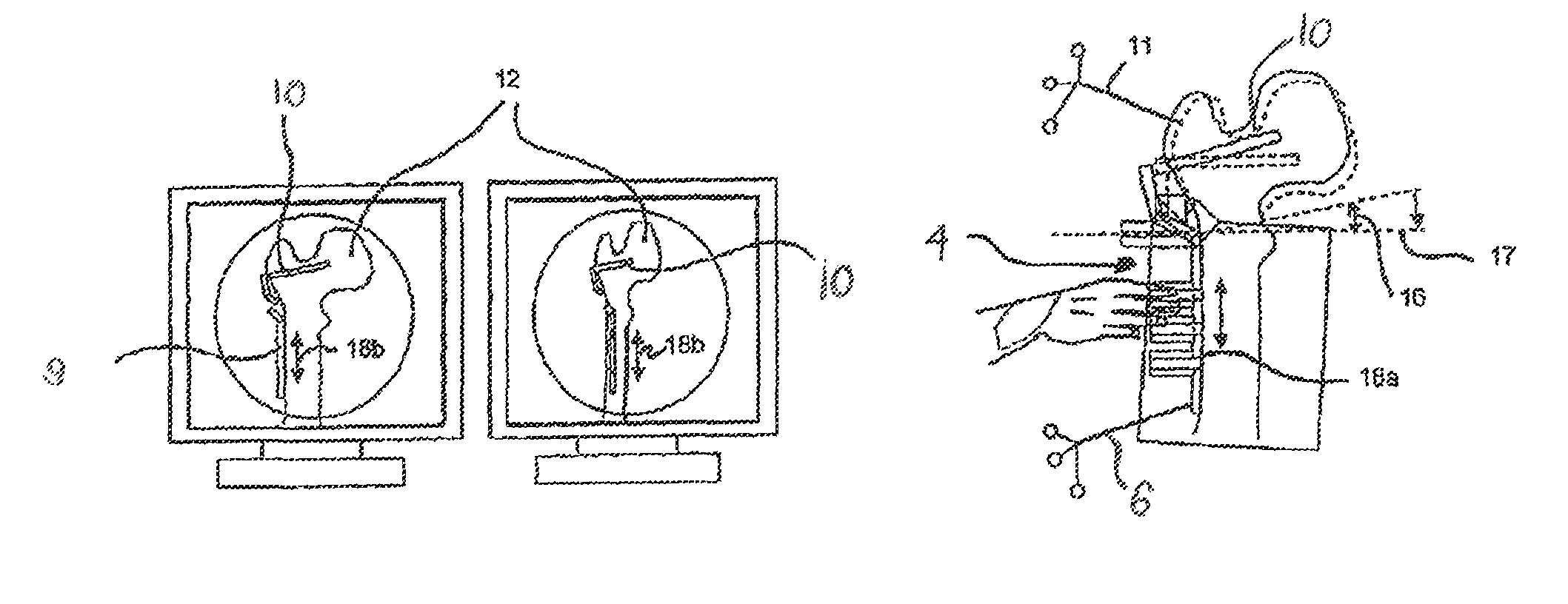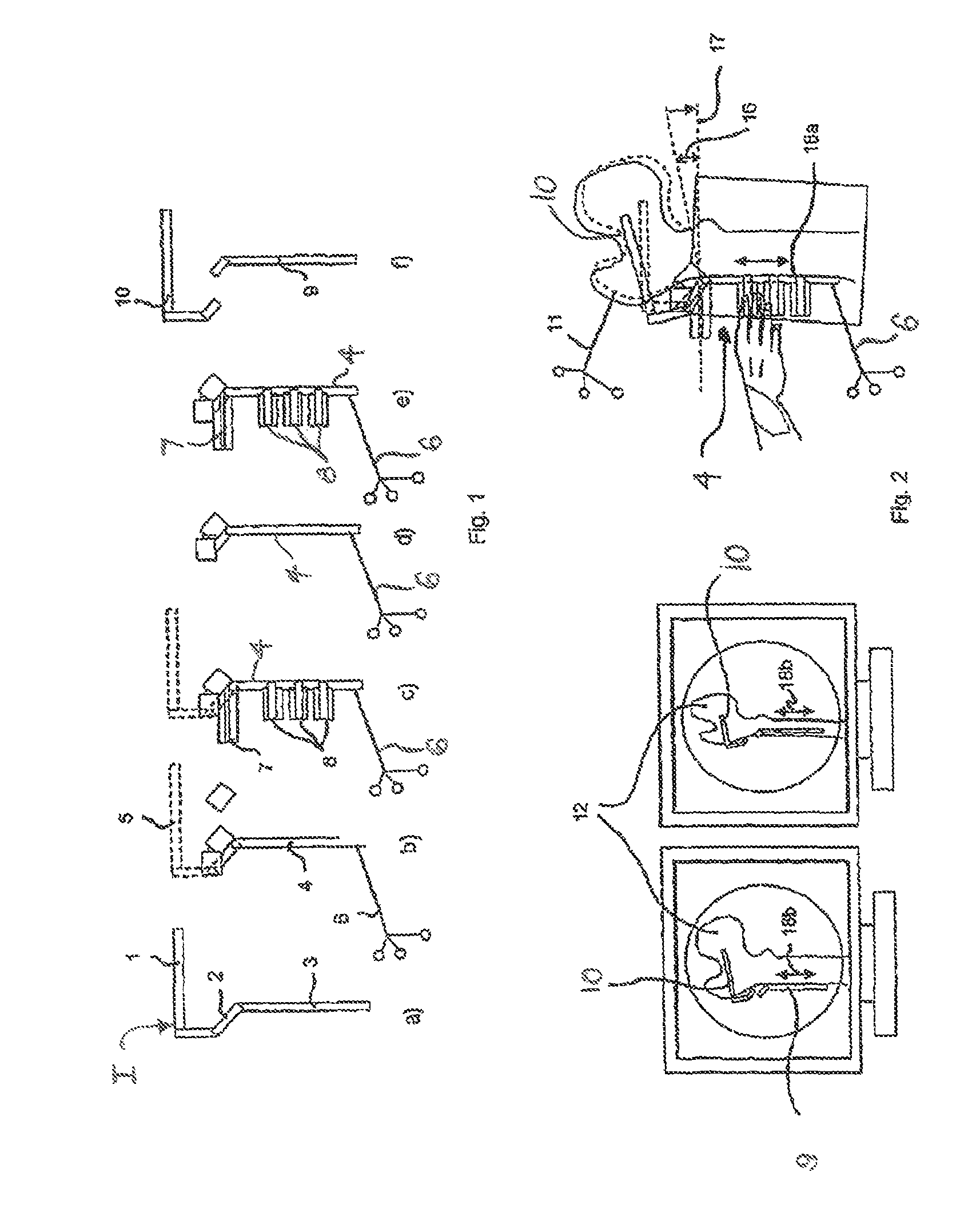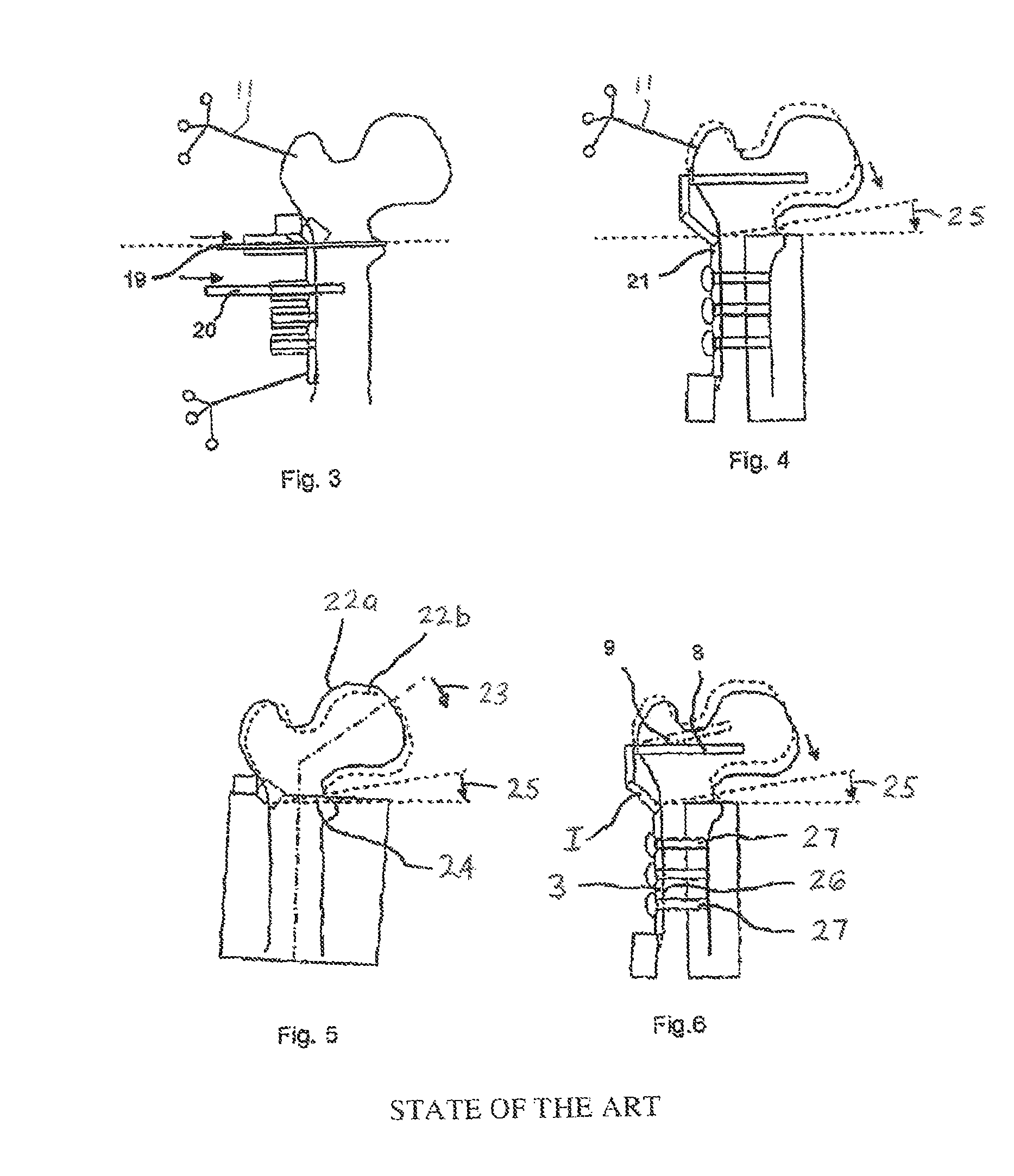Implant location positioning system
- Summary
- Abstract
- Description
- Claims
- Application Information
AI Technical Summary
Benefits of technology
Problems solved by technology
Method used
Image
Examples
Embodiment Construction
[0038]In FIG. 1a, in the side view a typical implant I to be used is shown: a “right angle plate”, using a schematic representation. Hereby this consists of a blade part 1, which is driven into the bone, a right-angle bend 2 (because of the anatomy—trochanter major) and a plate-part 3, which must be flush with the bone surface. The simplest form of the device is shown in FIG. 1b for the sake of understanding the device according to the invention (solid part without dotted line) and shows that the device 4 consists only of the plate part, which has a form and dimensions identical to the original plate part 3, and, for example, of a small part of the right angle bend 2 (in any case only parts that lie outside the bone). Such implants I are frequently rounded at the bone contact surface in order to correspond to the bone geometry better, which is mostly round. The device 4 always has an identical geometry. For the sake of understanding, part of the entire implant I that is not containe...
PUM
 Login to View More
Login to View More Abstract
Description
Claims
Application Information
 Login to View More
Login to View More - R&D
- Intellectual Property
- Life Sciences
- Materials
- Tech Scout
- Unparalleled Data Quality
- Higher Quality Content
- 60% Fewer Hallucinations
Browse by: Latest US Patents, China's latest patents, Technical Efficacy Thesaurus, Application Domain, Technology Topic, Popular Technical Reports.
© 2025 PatSnap. All rights reserved.Legal|Privacy policy|Modern Slavery Act Transparency Statement|Sitemap|About US| Contact US: help@patsnap.com



